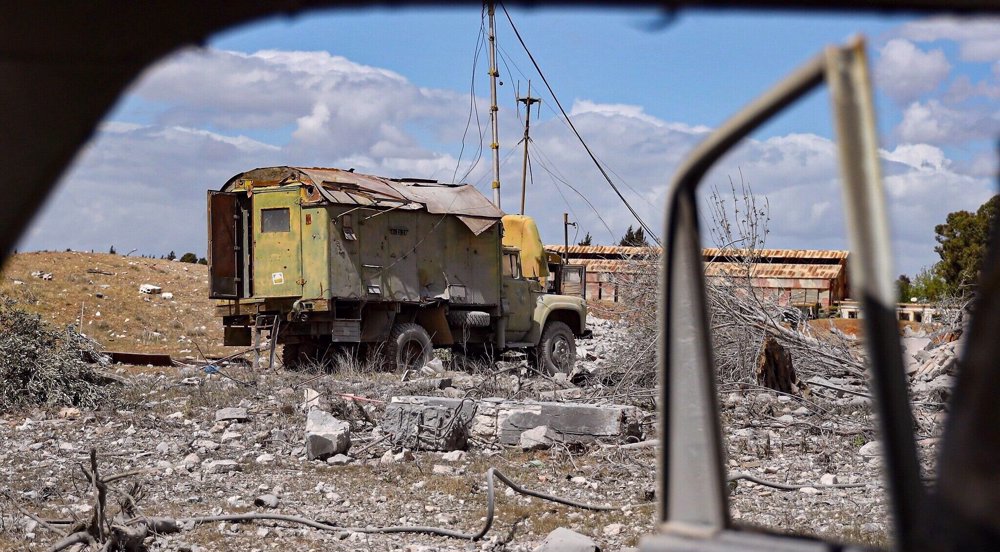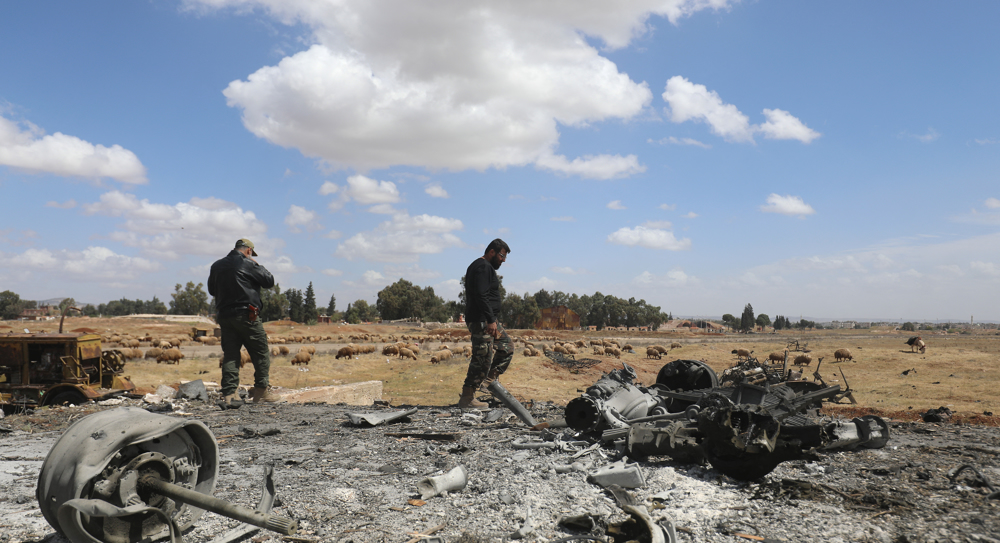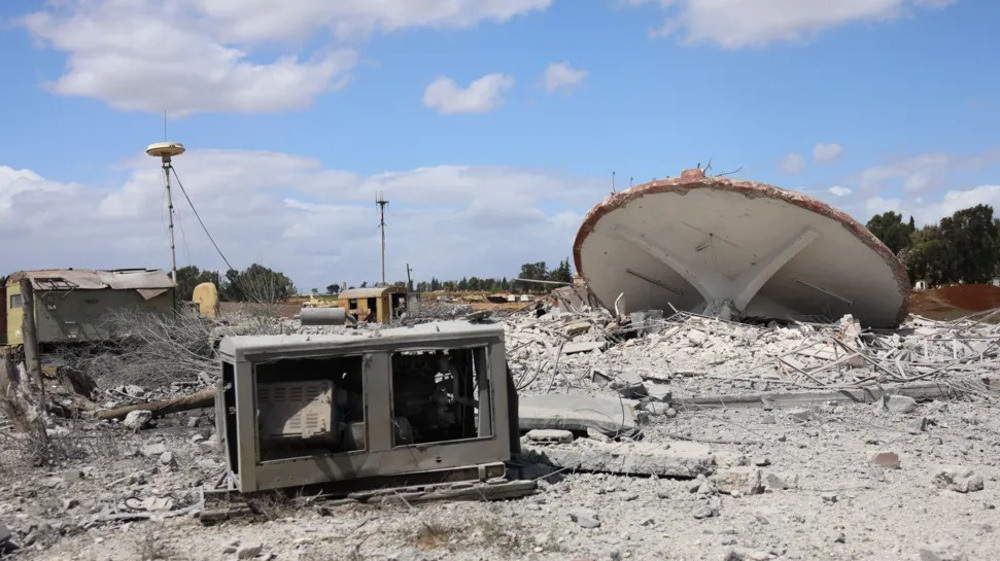Daesh releases images of Baal Shamin temple destruction
The destruction of Baal Shamin feels like "a wound in my heart," Syria’s antiquities chief Maamoun Abdulkarim says. “All of my memories were torn to shreds; I lost a part of my being. It felt like my family home had been burned down. I felt insulted before this criminal act and our powerlessness and the powerlessness of the international community to stop it.”
Takfiri terrorists’ media arm in the central Syrian province of Homs released on Tuesday some images depicting the destruction of the 2,000-year-old Baal Shamin temple in the historic Syrian city of Palmyra. The series of photos shows Daesh group members placing barrels and small containers of explosive in and around the temple.


The pictures, which appear to be screen shots from a video, also show a large explosion and the resulting cloud rising from the temples location.

And finally the aftermath of the terrorists’ terrible endeavors.

“It is easy enough to view the damage to these heritage sites as something that can be rebuilt, if all we see is the physical; it is far more difficult to grasp the effects of cultural cleansing in the longer term, and to truly absorb its impact on a country’s people,” Lynda Albertson, the chief executive of the Association for Research into Crimes against Art, told The Guardian.
The temple, situated in Palmyra in Homs some 215 kilometers northeast of the Syrian capital Damascus, was blown up on Sunday. The city is considered one of the ancient world’s most important cultural centers and was overrun by ISIL on May 21.

Israel claims it destroyed former military site in southern Syria

Britain urges Israel to respect Syria’s borders, prioritize diplomacy

Israeli warplanes carry out more airstrikes near Damascus
Araghchi says no round of talks held between Iran and US
Rocket barrage launched from Gaza strikes Israeli port of Ashdod
Iran’s gas oil production up by over 8% in H2 last calendar year
VIDEO | Press TV's News Headlines
Rafah 'wiped off the map' by Israel's ethnic cleansing campaign
VIDEO | Yemen accuses US of targeting civilians in Eid airstrike
Iran posts $14.6bn trade deficit for calendar year to late March
VIDEO | Ukraine: The US U-turn that knocked out Europe







 This makes it easy to access the Press TV website
This makes it easy to access the Press TV website